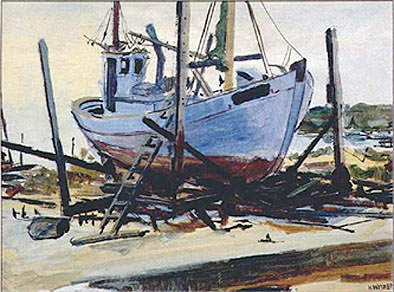 |
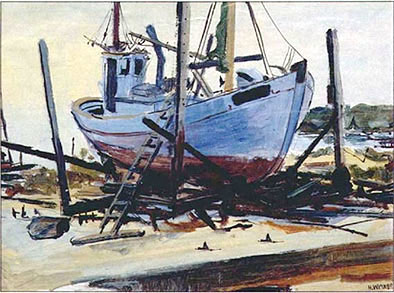 |
|
|
|
 |
 |
|
|
|
 |
|
Adobe? - Bitstream? - Compugraphic? - Herlitz? - Linotype? - Monotype? - Southern Software? The answer is here |
 |
|
Question: Which companies sell which forgeries and which company sells which original? The answers are found in the documents downloadable below. Read also this: "Adrian Frutiger: Et tu, Brute?" |
The
Funny Font Forging Industry
A
Report for Legal Authorities
In the font forging industry, "nefarious and evil knock-off clones" (Bruno Steinert) are customary. Two forging methods are applied:
1. Monotype Method: This font forging method at first selects single letters ("mono" + "type") and forges these letters, and then it forges trademark and copyright notices.
2. Linotype Method: This font forging method does not waste time by the forging of single letters (the "line of type" remains unaltered), but straightaway forges trademark and copyright notices.
The report Forgers.pdf (155 KB, 9 pages) informs prosecutors and judges about the font forging methods in the font forging industry.
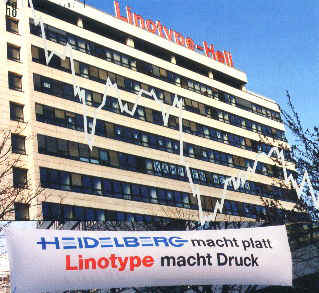 |
|
Quelle: "Traumschiff sinkt" von Joachim Peters |
1. "Linotype" GoldEdition 6.0
The document Linodobe.pdf (500 KB, 123 pages) lists the copyright notices of all fonts contained in the "Linotype" GoldEdition 6.0 published 10 years ago in 1995. However, 95% of these alleged "Linotype" fonts are provided with Adobe copyrights, so that this "Linotype" Library is sort of a "Linodobe" Library. Whether these copyright notices are fraudulent copyright notices or not must be decided by criminal lawcourts. On Adobe see below.
The entire Gold Edition 6.0 CD is documented by the huge file Lino60s.pdf (12 MB, 100 pages) containing typesetting specimens of the fonts of this alleged "Linotype" collection for the purpose of identifying font forgeries.
2. "Linotype" GoldEdition 1.7
The file Lino17.pdf (320 KB, 46 pages) lists 3880 fonts contained in the Linotype "GoldEdition 1.7" of September 2002, but still sold in 2005. For comparison, this file also contains a list of the fonts sold by Linotype several years ago in 1999. As of December 2005, Linotype is selling the minor update "GoldEdition 1.7.1" comprising 3900 fonts.
Furthermore we offer the short separate file Lino16.pdf (70 KB, 10 pages) listing the fonts of the "GoldEdition 1.6" of January 2002.
On the "Linotype OpenType Flirt" CD 2003 see below.
Legal Note: Since laymen cannot spot forged fonts (Prosecutors and judges may study the report "Forgers" above), those who want to buy a Linotype font should insist that Linotype supplies an expertise by an independent forgery expert guaranteeing that the Linotype font you intend to buy is no forgery. If the Linotype foundry does not give full warranties, you should not buy Linotype typefaces: "I would recommend to obtain full warranties from the foundry that the typefaces do not infringe any rights anywhere in the world" (Niel Ackermann of Hewitsons Solicitors).
3. The Economic Downfall of Linotype
The various former companies "Linotype GmbH", "Mergenthaler Linotype GmbH", "Linotype AG", "Linotype-Hell AG", and "Allied Corporation" etc. were liquidated in the mid-1990s. Before the "Linotype-Hell AG" was liquidated, it published the "GoldEdition 6.0" in June 1995. The remains of the bankrupt Linotype-Hell AG were acquired by the Heidelberger Druckmaschinen AG. For details about the economic downfall of Linotype read the German report "Traumschiff sinkt" written by Joachim Peters. Note that his website www.yadim.com is now defunct.
In May 1997, the "Linotype Library GmbH" was founded as a subsidiary of the Heidelberg printing machine company.
This new "Linotype Library GmbH" published the former "GoldEdition 6.0" as "new" release "GoldEdition 1.1" (with a confusing new version number) in January 2000. Both the final "Gold Edition 6.0" (Linotype-Hell AG) and the first "Gold Edition 1.1" (Linotype Library GmbH) contain ca. 2100 fonts. Note for criminal courts: 95% of these ca. 2100 "Linotype" fonts bear "Adobe" copyright notices.
Later, the entire ITC (International Typeface Corporation) font collection with ca. 1000 additional ITC fonts was added to the "GoldEdition", and the present version "Gold Edition 1.7" comprises ca. 3900 fonts. Note for criminal courts: Of these ca. 3900 fonts, ca. 2000 fonts seem to be coyprighted by Adobe, ca. 1000 fonts seem to be copyrighted by ITC, and the remaining ca. 900 fonts seem to be copyrighted by Linotype itself and by various other minor companies.
In November 2005, the "Linotype Library GmbH" adopted the name of the liquidated "Linotype GmbH", so that historians now must distinguish between the old liquidated "Linotype GmbH" and the new not-yet-liquidated "Linotype GmbH".
In August 2006, Monotype Imaging Inc. (owned by the private equity investment firm TA Associates) acquired the Linotype GmbH from the Heidelberger Druckmaschinen AG. The Monotype font forging company was the greatest enemy of Linotype's most renowned font designers, because Monotype specialized in forging Linotype fonts (e.g. "Book Antiqua" is a Monotype forgery of Hermann Zapf's "Palatino", "Arial" is a Monotype forgery of Max Miedinger's "Helvetica", "Segoe" is a Monotype forgery of Adrian Frutiger's "Frutiger", etc.). But Linotype's shady Bruno Steinert, who used to call these Monotype forgeries "nefarious evil knock-off clones", did not hesitate to hand over his most renowned designers Hermann Zapf and Adrian Frutiger to their greatest enemy, the Monotype font forging company.
4. Why wasn't Monotype acquired by Linotype?
The Heidelberger Druckmaschinen AG ("Heideldruck") is the world's largest printing maschine company with 3.5 billion Euro annual sales and 18,000 employees in the current fiscal year 2005/2006. Why should Heideldruck want to sell its small Linotype department, unless Linotype was on the brink of bankruptcy? Why did this huge Heidelberg company not buy the small Monotype outfit?
10 years ago, the former Linotype-Hell had debts to the amount of 300 million DM. Heideldruck's CEO Hartmut Mehdorn waited like a vulture until Linotype was on the brink of bankruptcy, and then he bought Linotype for the symbolic purchasing price of one Dollar and transformed Linotype into a font department of Heideldruck.
When Heideldruck acquired the remains of the bankrupt Linotype-Hell AG, Joachim Peters wrote in his report "Wie Heidelberg Linotype-Hell für einen Dollar bekam" in June 1997 the following:
"Als im Oktober 1995 Hartmut Mehdorn den Vorstandsvorsitz bei Heidelberg übernahm, befand sich die Linotype-Aktie schon im freien Fall. Für Heidelberg hat Mehdorn eine Einkaufsliste aufgestellt. Hinter Linotype-Hell stand darauf ein senkrechtes Kreuz: Abwarten, bis der Patient stirbt. Die Nachricht moribundus kam telephonisch um Pfingsten 1996. Mehdorn hörte den Bittsteller Dr. Königs an und gab Order zu kaufen. Die Abwicklung erfolgte streng nach der Etikette der Großfinanz. Der Bankier Dietrich-Kurt Frowein trat nach einem Jahrzehnt Amtszeit als Aufsichtsratsvorsitzender von Linotype-Hell zurück. Zugleich besann er sich auf zwei weitere Funktionen: Vorstandsmitglied der Commerzbank und Aufsichtsratsmitglied von Heidelberg. Die Commerzbank hielt über ihre Vermögensverwaltungsgesellschaft Frega rund 17 Prozent der Aktien von Linotype-Hell, weitere 33 Prozent lagen bei Siemens. Heidelberg war bereit, Linotype-Hell zu übernehmen, wenn die Commerzbank 75 Prozent der Aktien im Paket anbietet. Siemens nickte. Es galt also noch, von den freien Aktionären ein Viertel des Stammkapitals einzusammeln. Zeit- und zielgerecht taumelte der Kurs noch einmal steil nach unten und erreichte den Tiefpunkt von 60 Mark pro Aktie. Die Commerzbank machte ein Übernahmeangebot zum Kurs von 95 Mark. 8000 freie Aktionäre stießen ihre Depots ab. Heidelberg bekam das Gesamtpaket von 79 Prozent der Aktien rechnerisch für maximal 180 Millionen Mark. Praktisch war es der berühmte Kauf für einen Dollar. Linotype-Hell bringt 300 Millionen Verlustvortrag mit, der Heidelbergs Steuerlast etwa in Höhe des Kaufpreises mindert."It is assumed that Linotype was now again in difficulties. Heideldruck hurried to get rid of Linotype. Heideldruck did not even care to announce at its website that it got rid of Linotype. Good riddance!
When Linotype acquired the D. Stempel AG, it was liquidated soon and does not exist anymore. When Linotype acquired the Haas'sche Schriftgießerei, it was liquidated soon and does not exist anymore. It is assumed that now the same will happen to Linotype, i.e. now that Monotype acquired the Linotype GmbH, it will be liquidated soon and will not exist anymore. Bruno Steinert already left the sinking ship at the end of August 2006.
The document PublicDomain.pdf (125 KB, 5 pages) lists 1000 Linotype fonts which are in the public domain since at least January 2008, and explains how to calculate the periods of protection for typefaces whose designs have been registered at the design patent office.
The additional document PublicDomain2.pdf (38 KB, 3 pages) lists 400 additional Linotype fonts which are in the public domain since at least January 2010, so that now at least 1400 Linotype fonts are public domain fonts, including Neue Helvetica and many other well-known fonts.
The additional document PublicDomain3.pdf (180 KB, 6 pages) shows that even recent Linotype fonts, e.g. Zapfino, fell into public domain.
The additional document PublicDomain4.pdf (30 KB, 4 pages) lists 300 additional Linotype fonts which are in the public domain since at least January 2012, so that now at least 1700 Linotype fonts are public domain fonts, including almost all old ITC fonts.
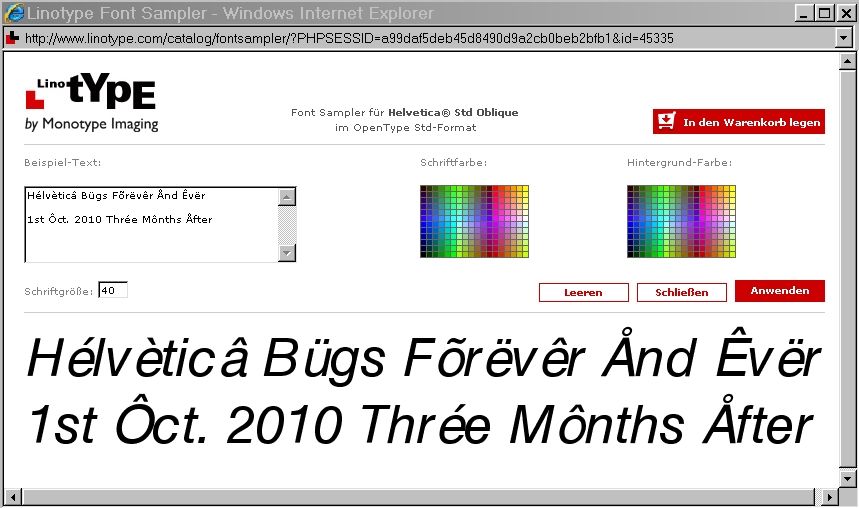 |
|
|
The document Helvetica-forever.pdf (730 KB, 7 pages) is a pictorial report for font-buying dimwits describing the technical bugs of Helvetica Std OpenType.
1. Adobe Font Folio 7
The Adobe Font Folio 7 was published 10 years ago in 1995 containing the classical PostScript Type 1 fonts. If you compare the file Adobe7.pdf (537 KB, 117 pages) with the document below about Font Folio 10, you will see that Adobe at that time also supplied the Berthold font collection which was removed from Font Folio 9 and 10. Furthermore, all the fonts of the old Font Folio 7 permit of "editing embedding" without any technical limitations, as opposed to the "crippleware" OpenType fonts contained in new Font Folio 10.
The entire Adobe Font Folio 7 collection is documented by the very huge file Adobe7s.pdf (10 MB, 57 pages) containing complete typesetting specimens of all text fonts for the purpose of identifying font forgeries, and by the file Adobe7pie.pdf (1.2 MB, 13 pages) containing typesetting specimens of all pie fonts (expert fonts, swash fonts, math fonts, symbol fonts, etc.). Please consult these font specimen files in connection with our documentation of the Adobe Font Folio forgery "Schriftenpaket Osteuropa", see below.
2. Adobe "Font Folio 10" (= OpenType Edition of Adobe Font Folio 9)
- In August 2000,
Adobe published the last PostScript Type
1 font collection "Font Folio 9.0".
- In August 2003,
Adobe published the OpenType
edition "Font Folio OpenType" (= "Font Folio 10")
The revised and greatly enlarged document Adobe9.pdf (570 KB, 218 pages) lists all OpenType fonts contained in the Adobe Font Folio OpenType Edition published in August 2003. This CD should be called "Font Folio 10", yet it is called OpenType Edition of Font Folio 9. This OpenType CD contains 486 OpenType font families totaling 2209 font styles (regular, bold, italic, etc.).
Note 1: It is easy to make dimwitted buyers pay twice. The same fonts sold by Adobe as "Adobe" fonts are sold by Linotype as "Linotype" fonts. There are dimwits in advertising agencies, design studios and printing plants who bought these two CDs:
- "Linotype" OpenType
Flirt CD 2003 (Euro 8,118)
- "Adobe" Font Folio
OpenType CD 2003 (Dollar 8,999)
These gullible dimwits have been taken for a ride: All fonts of the "Linotype" CD are contained on the "Adobe" CD.
Note 2: It is easy to sell useless stuff to dimwits. Most fonts contained on the Adobe Font Folio OpenType CD do not permit of "editing embedding" so that these fonts are practically useless.
Note 3: Adobe no longer sells PS Type 1 fonts. It now sells OT fonts. OpenType fonts permit of encrypting and embedding hidden private buyer data, e.g. postal and email address, bank account number, credit card number etc. When you are connected to the internet, it is easy for online shops to spy out your private data by reading the fonts installed on your computer. In this way, online shops also obtain email addresses for spamming purposes. See also Luc Devroye's notes on Adobe Store Security Breach spam emails.
3. Fonts bundled with Adobe Software
Adobe supplies ("bundles") fonts with Illustrator, InDesign etc. The file Bundles.pdf (66 KB, 8 pages) describes
- PostScript fonts
bundled with older Adobe Software (Page Maker etc.)
- OpenType fonts
bundled with newer Adobe Software (InDesign etc.).
The
Adobe Copyright Echolalia
The
Dynamic Font Copyright Year Method
The comprehensive document Interstate.pdf (200 KB, 89 pages) contains various technical explanations to "The Dynamic Font Copyright Year Method", also called "The Adobe Copyright Echolalia", which was discussed at the Typophile website and exemplified by a Font Bureau Type Specimens PDF file.
See also the additional document SSi2.pdf (20 KB, 1 page).
The document Monotype.pdf (115 KB, 17 pages) lists the fonts sold by Monotype alias Agfa alias Compugraphic.
In 1920-1940, Monotype made imitation fonts of old typefaces (e.g. Bell, Bembo, Centaur, Plantin, Poliphilus, etc.). Today, Monotype is known for releasing font forgeries. No Windows user can avoid using fonts forged by Monotype, because Microsoft integrated these forgeries into all versions of Windows. See e.g. the 2006 decisions concerning the font forgeries supplied with Windows Vista:
"Frutiger and Frutiger Next" (Linotype + Heidelberger) versus "Segoe UI" (Microsoft + Monotype)The Compugraphic Corporation (cg), founded in 1960 by William Garth in Wilmington (USA) was the largest manufacturer of phototypesetting machines. At the same time, Compugraphic was the largest font forging company of the pre-digital era.
Segoe.pdf, Segoe1.pdf, Segoe2.pdf, Segoe3.pdf, Segoe4.pdf, Segoe5.pdf, Segoe6.pdf, Segoe7.pdf
The cg catalog "The Type Book" of 1988 comprised more fonts than the catalogs of other foundries at that time. This catalog is highly interesting, for it includes the large list "Typeface Analogue" ("Welche Schrift heißt wo wie?") reproduced in the file Compugraphic.pdf (1.3 MB, 19 pages).
Historical Notes: In 1992, the old company Monotype Corporation Ltd. went bankrupt and was liquidated. This means that the old Monotype Corporation Ltd. does not have a legal successor. In the same year, the font forging company Monotype Typography Ltd. was founded. This new outfit used the name "Monotype", but was not the legal successor to the old Monotype Corporation Ltd. and therefore did not own the rights to old fonts made by the old Monotype Corporation Ltd.
In 1989, the former Compugraphic Corp. acquired by Agfa-Gevaert ceased to exist. Later in 1998, Agfa acquired Monotype, and the Agfa Monotype Corporation was founded. In 2000, Agfa Monotype acquired International Typeface Corporation from Esselte AB, which had previously bought ITC and also Letraset.
In 2004, Agfa sold the Agfa Monotype division to TA Associates, a private equity investment firm. TA Associates founded a new company Monotype Imaging Inc. offering old Monotype, Compugraphic, ITC and Letraset fonts, intermingled with fonts by other companies (Adobe, Linotype etc.).
In August 2006, the Heidelberger Druckmaschinen AG sold its fully-owned German company Linotype GmbH to the American company Monotype Imaging Inc. owned by the private equity investment company TA Associates.
Here we offer a large variety of documents describing all fonts contained in all versions of Corel Draw and Corel Ventura.
For pinpointing any of these hundreds of files consult the "CorelDraw Font Finder" downloadable as Cdrfonts.pdf (540 KB, 61 pages).
1. Typesetting Specimens of all CorelDraw Fonts
a) The folder Cdrfonts ("Documentation of all Corel Draw Fonts") contains no fewer than 750 PDF files documenting all Corel Draw fonts ever published.
b) The folder Linotype ("Linotype Fonts forged by Bitstream") contains typesetting specimens of the Linotype fonts forged by Bitstream.
2. TrueType Fonts of CorelDraw X3 (= Corel Draw 13) and CorelDraw X4 (= Corel Draw 14)
The file Corel13.pdf (330 KB, 36 pages) documents the fonts supplied with Corel Draw X3 (year 2006), also called Corel Suite X3 and Coreldraw 13.
Note that the Corel X3 font CD does not contain OpenType fonts with OT features such as glyph substitution etc. In fact, all fonts on the CD are plain, ordinary TTF fonts. If you need PostScript fonts, use the older Coreldraw CDs, e.g. Corel 12.
The file Corel14.pdf (370 KB, 23 pages) documents the fonts supplied with Corel Draw X4 (year 2008), including 10 special engraving machine fonts.
3. PostScript and TrueType Fonts of CorelDraw 12
This document, downloadable as Corel12.pdf (303 KB, 53 pages), describes all 1050 PostScript and all 1196 TrueType fonts of the previous version CorelDraw 12 (year 2004). The word "all" here means that all non-Latin fonts (Eastern Europe, Greek, Cyrillic fonts etc.) are described too, besides the usual 1252 Code Page fonts for Western Europe.
4. Comparison: CorelDraw 9 vs. CorelDraw 11
In this general overview document downloadable as Corel911.pdf (245 KB, 41 pages), we compare the Western Europe PostScript Type 1 fonts of CorelDraw 9 (year 1999) with the Western Europe Truetype fonts of CorelDraw 11 (year 2002), and we show how Bitstream forged fonts repeatedly. The fonts of Bitstream's "Type Odyssey 2" are also listed in this general overview document.
5. PostScript Fonts (Corel Draw 9 and 8 vs. Corel Ventura 4.2)
It seems that CorelDraw 9 of year 1999 (and CorelDraw 8 of 1997) contains most PostScript Type 1 fonts of all versions of CorelDraw published. For instance, CorelDraw 11 contains only 850 TrueType fonts with Western Europe character set, whereas CorelDraw 9 includes 1070 PS Type 1 fonts with Western character set.
In the document Corel9.pdf (182 KB, 35 pages), all PostScript Type 1 fonts of CorelDraw 9 (and CorelDraw 8) are listed:
1070 Western Europe
fonts
105 Eastern
Europe fonts
23 Cyrillic fonts
61 Symbol fonts
thus totalling 1259 PS fonts. The suppliers of these CorelDraw PS Type 1 fonts (Bitstream, URW, Letraset etc.) are also listed. For the differences between the fonts of CorelDraw 9 and 8 please read the above document Corel9.pdf which was enlarged in May 2005.
For comparison with the document Corel9.pdf, we also offer the document Corelv4.pdf (60 KB, 10 pages) describing the 612 PostScript Type 1 fonts supplied with the old Corel Ventura Publisher 4.2 of November 1993, the first version published by Corel.
6. TrueType Fonts (Corel Draw 11 vs. Corel Draw 5)
In the document Corel11.pdf (120 KB, 24 pages) all TrueType fonts supplied with CorelDraw 11 (October 2002) are described:
1. Latin Fonts with
Western Europe Character Set (Bitstream fonts etc.)
2. Latin Fonts with
Eastern Europe Character Set (URW fonts)
3. Fonts with Mixed
Latin and Cyrillic Character Set (URW fonts etc.)
4. Fonts with Symbols
and other Pie Characters (Corel fonts etc.)
5. Fonts with Windows
95 Glyph List Character Set (WGL4) (Bitstream fonts)
6. Fonts with Greek
Character Set (Bitstream fonts)
7. Fonts with Hebrew
Character Set (Kivun fonts etc.)
8. Fonts with Far
East Character Set (YangJae Media fonts etc.)
For comparison, we also offer the document Corel5.pdf (70 KB, 14 pages) describing 830 TrueType fonts distributed by Corel Corp. in 1990-1994. At that time, CorelDraw was supplied with a lot of fonts which are no longer distributed by Corel today.
The large document
Bitstream1.pdf
(1 MB, 29 pages) depicts all present-day Bitstream fonts of the year 2005.
For comparison, the file also lists the fonts as sold formerly by Bitstream
in the year 1992. Note that the company Bitstream Inc. was acquired by Monotype Imaging in November 2011.
For the fonts contained on the CD "Bitstream Type Odyssey" (= "Type Odyssey 1")
published in 2001 see the document Bitstream3.pdf (180 KB, 20 pages).
For a comparison of the "Type Odyssey 1" with the "Type Odyssey 2" see the above documentation
Corel911.pdf, pages 34 through 41.
Typesetting Specimens of Linotype Fonts forged by Bitstream
The folder Linotype ("Linotype Fonts forged by Bitstream") contains no fewer than 400 PDF files documenting all Linotype fonts forged by Bitstream in the 1980s, when Matthew Carter headed this font forging company. The document Key to the "Bitstream" Fonts, downloadable as file Bitstream2.pdf (145 KB, 13 pages) is the key to the Linotype fonts sold as "Bitstream" fonts. The document contains two lists, one list sorted by Linotype font names, and another list sorted by Bitstream font names. The file also includes the names of the designers or forgers, and the year of design or forgery, of all the fonts listed.
The MegaFont XXL collection of 2002 by the German Softmaker GmbH is of particular importance for historians of typography. It includes many original fonts of the Berthold period 1858-1993 no longer available elsewhere, e.g. the original Palatino by Hermann Zapf of 1950. The Berthold foundry was founded in 1858 in Berlin as "H. Berthold Messinglinienfabrik und Schriftgießerei". Due to mismanagement it went broke in 1993. Berthold was the most important German type foundry.
In the document Megafont.pdf (105 KB, 19 pages) the original typeface names and the original typeface designers (including the year of first release) are listed for hundreds of typeface families with more than thousand styles (regular, bold, italic, etc.). Special emphasis has been placed on classical old style, transitional, modern, sanserif and slabserif typefaces, which have been a hallmark of the former H.Berthold AG and which have been completely analysed and identified. This document was updated in March 2005 to include the "infiniType 2.0" font collection.
If you need additional information on the 5835 typeface cuts of the 5 most important font groups of the MegaFont XXL CD, you may download the comprehensive document Megafont2.pdf (490 KB, 37 pages).
"TruePack Professional - 555 Schriften " and "555 professionelle TrueType Fonts"
For comparison with the above Megafont XXL of 2002, we also offer the document TruePack.pdf (48 KB, 7 pages) listing 500 fonts contained in the predecessor CD "TruePack Professional. 555 TrueType-Schriften". A ripoff version of this TruePack CD is sold by Sean Cavanaugh as "The FontSite 500 CD". We also created a second very large document Truepack2.pdf (4 MB, 76 pages) containing detailed typesetting specimens (alphabets and sample texts) to show the quality of such "one-cent-per-font" collections. The TruePack CD puts up a good show: Most fonts are not much worse than the stuff contained in the "ten-thousand-dollar" CDs sold by Adobe and Linotype (e.g. in year 2005, "Adobe Font Folio" retailed at 8,999.00 Dollar, and "Linotype GoldEdition 1.7" retailed at 8.910.00 Euro).
The fonts made by Brendel (for Brendel and Greenstreet see below) and SoftMaker were also sold by other outfits. For example, the TopWare CD-Service AG in Mannheim (Germany) distributed the CD "555 professionelle TrueType Fonts für Windows" described in the file TopWare.pdf (190 KB, 23 pages) with font forgeries made by Brendel in Cologne and by SoftMaker in Nuremberg.
Please note that
both "Professional" CDs contain entirely different fonts, although both
CDs contain exactly 555 fonts each.
.
Die Einlassungen
des Schriftfälschers Martin Kotulla
Für Richter und Staatsanwälte sehr interessant sind die Einlassungen des Herrn Martin Kotulla vom August 2006. Siehe hier.
Sean Cavanaugh's ripoff outfit FontSite Inc.
For Cavanaugh's ripoff outfit FontSite, which sell a subset of the MegaFont stuff, see the separate document for legal authorities FontSite.pdf (1 MB, 4 pages). Cavanaugh, who lives in San Diego, falsely claims to be "copyright owner" and "trademark owner" of MegaFont stuff sold by Martin Kotulla in Nürnberg (Germany).
Sybex "10000 Schriften"
The Sybex CD which contains re-renamed fonts drawn from the MegaFont CD is described in the document Anniversary.pdf (250 KB, 81 pages).
Besides the "MegaFont XXL" CD documented above, there is a similar font collection CD by Franzis Publishers entitled "Windows XP Profischriften 2003" (since 2004 entitled "1.800 Schriften für Windows" and "1.800 Profischriften für Windows") also containing most fonts of the "Berthold Types" collection and also fonts by Adobe, Monotype, Linotype and other foundries. The Franzis CD includes many fonts not contained in the Megafont CD.
In the document Franzis.pdf (440 KB, 41 pages) the original typeface names of the 1774 fonts of this CD are described in detail. This file also contains remarks on interesting copyright issues concerning Franzis' Verlag GmbH, PrimaFont GmbH, ClassicFontCorporation, Christine Mauerkirchner and Rainer Grunert.
We also prepared a huge file Franzis2.pdf (9.2 MB, 57 pages) containing typesetting specimens of all fonts of the Franzis CD.
Data
Becker's Golden Series - 2500 Fonts CD
Goldene
Serie - Das große Schriftenpaket 2.500
In the report "The Funny Font Forging Industry", I described, how Bruno Steinert forged the "Akzidenz-Grotesk" by the "Linotype Method". This cost-efficient font forging method was also applied here by Data Becker to the 2500 fonts which were forged such that the original names of all the 2500 fonts were erased and replaced by forged names (e.g. "Peter Becker" as forged name instead of the true name "Futura" of this font by Paul Renner). However, the "Monotype Method" was also applied by Data Becker.
In the document DataBeck.pdf (350 KB, 57 pages) all 2500 fonts are listed by "source" and "copyright notices", and the font forging methods are described by examples of forged fonts.
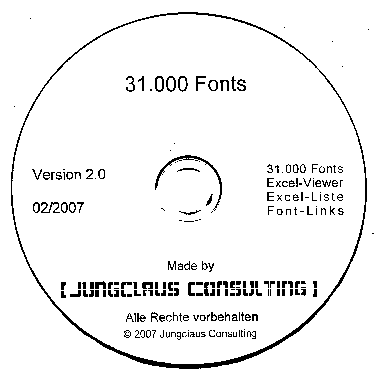 |
In 2007, the company Jungclaus Consulting in Ellerbek (Germany) released a big DVD containing exactly 31,006 TrueType fonts. All 31,006 TTF fonts have a combined size of 1,753,229,974 Bytes (1.7 Gigabytes) and are sold via German Ebay as one single DVD at 13.79 Euro. I document this DVD comprising both commercial and non-commercial fonts by two huge files:
1. F31000e.pdf (634 pages, 1.1 MB) contains the external file data, e.g.:
AJenson-SemiBold.ttf (AJE9E8~1.TTF, 26.01.2007, 139116)
2. F31000i.pdf (1784 pages, 3.3 MB) contains internal data, e.g.:
AJE9E8~1.TTF | AJenson | SemiBold | ALLTYPE:AJenson SemiBold:ATECH | AJenson SemiBold | Converted from e:\_downl~1\fonts\_\AJ7791~1.TF1 by ALLTYPE | AJenson-SemiBold | | Copyright (c) 1995, 1996 Adobe Systems Incorporated. All Rights Reserved.Adobe Jenson is a trademark of Adobe Systems
This Jungclaus DVD, besides thousands and thousands of other fonts, includes for example 2087 Bitstream fonts, 468 Corel fonts, 411 URW fonts, 2812 Weatherly Systems (W.S.I.) fonts, 565 Monotype fonts, 268 Agfa fonts, 129 Letraset (Esselte) fonts, 468 Southern Software fonts, 168 Typographer Mediengestaltung (Dieter Steffmann) fonts, 693 Apostrophic Lab fonts, 52 Font Bureau fonts, etc. etc. etc.
Have a look at the tiny file F31000.pdf (5 pages, 60 KB) containing a few sample pages, so that you may decide, whether you require the two huge files.
Note: On 25th March 2007, 10 days after publication of my documentation, Jungclaus Consulting discontinued the distribution of the above "31.000 Fonts" DVD and of similar font CDs via Ebay. It turned out that Mr. Lars Jungclaus was the victim of the shady Ebay shop "cheaply4u", run by a certain Özlem Öztel in Herschbach, which is selling non-existing reseller licenses to fonts via Ebay.
The font forging outfit Weatherly Systems Inc. (WSI and W.S.I.) run by Michael Charness is "semi-defunct". Ferrari driver Michael Charness made a fortune by selling "licenses" for his font forgeries to other "resellers". For example, the printer company Canon purchased as "reseller" the "licenses" to many WSI font forgeries.
That's how it is done in the font forging industry: You grab the fonts sold by others, delete the "copyright" notices, insert your own "copyright" notices and then sell these forgeries to thousands of idiots, and when you have made a big fortune, you buy a Ferrari.
The document WSI.pdf (430 KB, 195 pages) describes 2000 font forgeries made by WSI.
The defunct company "Solus Gesellschaft mbH" in Iserlohn (Germany), also known as "New Media Agency GmbH" in Menden, formerly run by Susanne Kurschus, compiled a font collection which is one of the worst rip-off collections I have ever seen. The files on this Herlitz CD have been ripped off from private BBS and from the CDs of other font companies (Adobe, Berthold, Bitstream, Linotype, Monotype, etc.).
The big documentation
Herlitz.pdf
(1.3 MB, 190 pages) contains 2 comprehensive lists:
List 1 documents
the "copyright notices" and List 2 documents all other font internals.
"Herlitz 4.000 Fonts" is also available via rental shops, e.g. Mietmeile
and Verleihshop, claiming that "New Media Agency GmbH" is the supplier ("Anbieter").
Font Collection by Sprint Software - Listing of Font Internals
This font collection contains roughly 3000 TrueType fonts. The collection is contained on a CD entitled "Super Oz Shareware Fonts" produced by the defunct "Sprint Software Pty Ltd", run by Niall Ginsbourg. Despite the misleading label "shareware", this CD contains a lot of commercial fonts by Adobe, Linotype, Agfa, Monotype, URW etc. etc., often using the real typeface names ("Helvetica" etc.). The CD also contains 200 fonts by David Rakowski.
The rip-off CD by Niall Ginsbourg is similar to the above "Herlitz" rip-off CD by Susanne Kurschus. In order to show how the fonts of the Sprint CD were forged, I here also dumped all internal font name field entries. In this way, a lot of additional data was made visible. This large document is downloadable as Sprint.pdf (622 KB, 157 pages). The cover of the 1995 CD is depicted in Sprint_CD.pdf.
On 28th September 2005, I received a comprehensive email by Mr. Niall Ginsbourg allowing me to quote his email "so readers can get a more complete picture on this issue". Therefore I uploaded his email file as Sprint_Email.htm.
1. The document SWFTE.pdf (217 KB, 29 pages) describes roughly 1600 font forgeries by the defunct SWFTE International Ltd. in Rockland (USA), later sold by Expert Software Inc. and as Fantastic Fonts. SWFTE was sued by Bitstream et alii.
2. The document SSi.pdf (290 KB, 37 pages) describes roughly 2000 fonts forged by Paul King of Southern Software Inc. in Florida (USA). This font forging company was sued by Adobe for having forged Robert Slimbach's "Utopia". See also SSi2.pdf (20 KB, 1 page). For Ronald M. Whyte's judgment see Veracity.pdf (65 KB, 9 pages) and Veracity2.pdf (53 KB, 1 pages). For the Eltra Corp. v. Ringer ruling see Eltra.pdf (46 KB, 7 pages)
3. The document Tewi.pdf (318 KB, 31 pages) describes the "Key Fonts 1222" collection distributed in Germany by Tewi in Munich, which contains 1316 "SoftKey" forgeries, each in TTF and PS format, made by the above Southern Software Inc. (SSi).
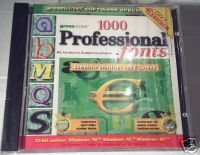 |
"100 Fonts True Type" CD "500 Elegant Fonts" CD "500 Fantastic Fonts" CD "1000 Professional Fonts" CD "2000 Fonts Collection" CD |
The British font forging company GST Technology alias Greenstreet Software selling thousands of font forgeries made by Brendel & Pabst, was sued by Linotype in 2001. And the German font forging company Brendel & Pabst alias B & P Graphics Ltd. alias Brendel Informatik GmbH alias The Quick Brown Fox GmbH in Cologne was sued by FontShop in Berlin.
The large document Greenstreet.pdf (462 KB, 90 pages) describes all five CDs sold by Greenstreet containing mostly font forgeries made by Brendel. For example, the forgery "Chanson" contained on the "500 Fantastic Fonts" CD and provided by the forgers in Cologne with the false copyright notice "(C) 1994 Brendel Informatik GmbH" is a forgery of the font "Arcadia" designed by Neville Brody in 1990. Note that all five Greenstreet CDs are still sold today in 2006 including the forgeries of "Arcadia" etc.
In order to identify font forgeries, huge PDFs with complete typesetting specimens of all GST/Brendel fonts were made:
- "1000 Professional
Fonts": GST1000pro.pdf
(11.7 MB, 63 pages) ***
- "500 Elegant Fonts":
GST500elegant.pdf
(6.7 MB, 32 pages) ***
- "500 Fantastic
Fonts": GST500fantastic.pdf
(7.7 MB, 24 pages) ***
*** Before downloading these huge files, have a look at the small sample GSTsample.pdf (200 KB).
In addition to the large font forging companies described above, there are several small forging outfits, for example the MicroLogic Software Inc. run by Frank Hainze who specialized in forging typefaces by ITC (International Typeface Corporation). These forged typefaces (a total of 145 fonts) sold as "PrintMaster" CD are described in the short first document MLS.pdf (50 KB, 6 pages).
Typesetting specimens of the forged fonts are shown in the large second document MLS2.pdf (2 MB, 10 pages).
Drei
Beiträge über Elsner & Flake alias "fonts4ever"
.
.
Escoria
- Der Abschaum der Typographie
.
(La Escoria de
la Tipografía - The Scum of Typography)
.
 |
"Escoria - Der Abschaum der Typographie": In der Dokumentation Escoria.pdf (1,1 MB, 11 Seiten) befassen wir uns exemplarisch mit der Schriftfälschung "Escorial", die von den Fälschern Veronika Elsner und Günther Flake an schwachsinnige Fontkäufer verhökert wird. Die Fälschung "Escorial" wurde ausgewählt, weil hier der Name zugleich Programm ist, denn "escoria" heißt in Spanisch "Abschaum", und "escorial" heißt "Haufen voller Abschaum".
"Softmaker's Maurice und Linotype's Chevalier": In der Dokumentation Chevalier.htm wird gezeigt, daß der von Linotype seit Juni 2006 verkaufte Font "Chevalier" eine Kopie des von Softmaker seit über 10 Jahren verkauften Font "Maurice" ist.
In dem Bericht Brendel.pdf (590 KB, 10 Seiten) befassen wir uns mit der Frage, ob Grafikdesigner als schwachsinnig anzusehen sind, wenn sie zu Wucherpreisen Kollektionen von gefälschten Fonts wie z.B. die uralte "TypeShop Collection" von Walter Brendel kaufen, die seit August 2006 von Elsner + Flake verhökert wird.
In unserer Dokumentation Scangraphic.pdf (550 KB, 13 Seiten) beschreiben wir die Schriftfälschungen der "Scangraphic Digital Type Collection", die seit den 1980er Jahren von den Schriftfälschern Bernd Holthusen, Volker Küster und Albert-Jan Pool hergestellt und später als PostScript-Schriften über das FontShop in Berlin an dumme Schriftkäufer verkauft wurden.
Inzwischen haben Veronika Elsner und Günther Flake sich diese Scangraphic-Schriftfälschungen unter den Nagel gerissen und verhökern diese nunmehr an leichtgläubige Schriftkäufer in Werbeagenturen und DTP-Studios, denen man mühelos Schriftfälschungen für teures Geld andrehen kann.
Die
selbsternannten "Rechtsnachfolger" der H. Berthold AG
.
(The Self-Declared
"Legal Successors" of the Stock Corporation H. Berthold AG)
.
 |
H. Berthold AG" Welcome
to the impostors
Welcome to the dead G. G. Lange |
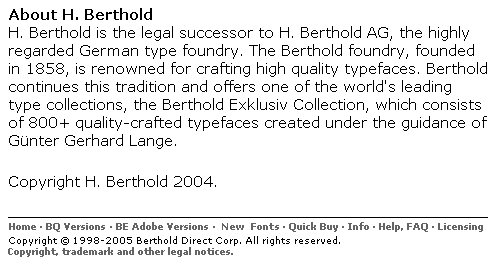 |
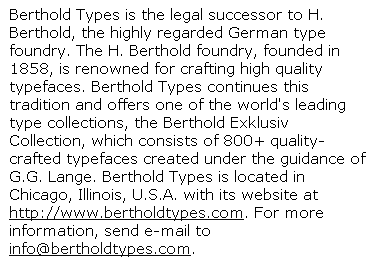 |
| siehe http://www.bertholdtypes.com/info/pr_ggl.html | siehe http://www.creativepro.com/story/news/0,1819,3693,00.html |
In der "Funny Font Forging Industry" haben Hochstapler keine Mühe, leichtgläubige Deppen in Werbeagenturen, DTP-Studios und Druckereien zu übertölpeln und durch Vorspiegelung falscher Tatsachen über den Tisch zu ziehen. Daher verwundert es nicht, daß nach dem Konkurs der H. Berthold AG in Berlin sich diverse Klitschen als "Rechtsnachfolger" der bankrotten Aktiengesellschaft selbst ernannten, z.B. die Hochstapler Harvey Hunt und Melissa Hunt in Chicago, die ihre Klitsche mal als "H. Berthold" und mal als "Berthold Types" firmieren und die den Idioten, die bei diesen Hochstaplern Fonts kaufen, vorgaukeln, "Rechtsnachfolger" ("legal successor") der Aktiengesellschaft H. Berthold AG zu sein.
In unserem Anfang 2006 erschienenen Bericht Berthold.pdf (700 KB, 33 Seiten, mit späteren Nachträgen vom Mai 2006) befassen wir uns ausführlich mit diesen selbsternannten "Rechtsnachfolgern" der H. Berthold AG, die wegen Bankrotts vom Berliner Konkursgericht im Jahre 1993 liquidiert wurde und folglich gar keinen Rechtsnachfolger haben kann (vgl. § 262 ff. AktG). Ergänzend verweisen wir auf die in unserem Bericht erwähnten Dokumente Teipel.pdf (PDF erfordert Acrobat 5) und Standard.pdf (20 KB, 10 Seiten), die auch von anderen Websites heruntergeladen werden können.
Günter Gerhard Lange ist im Jahr 2008 verstorben, aber auf der Hochstapler-Website www.bertholdtypes.com tut man auch heute noch so (Stand: Oktober 2009), als würde G. G. Lange immer noch leben und als wäre Lange immer noch für die Hochstapler tätig.
An English-language summary written by Prof. Dr. Luc Devroye is downloadable as Berthold_Types.pdf (2 pages).
Barmen
- Sari - Dax - UPS Sans -Wer plagiierte was?
.
(Report on How
United Parcel Service Plagiarized the Font "FF Dax")
.
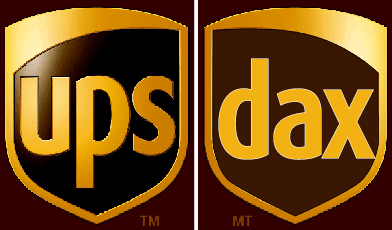
In dem Beitrag Barmen.pdf (360 KB, 16 Seiten) befassen wir uns mit dem Plagiat "UPS Sans" und seiner Vorgeschichte. Die "UPS Sans" war Gegenstand eines Anfang 2006 zu Ende gegangenen skurrilen Verfahrens, das für die FontShop AG in Berlin wie das Hornberger Schießen ausging. Die Paketfirma UPS hatte die Firma FutureBrand beauftragt, den Font "FF Dax" (FontShop) von Hans Reichel zu plagiieren, wobei dieser Font auf dem Selbstplagiat seiner "Barmen" (Berthold) basiert, die von FontShop als "FF Sari" verkauft wird.
Das Plagiat "UPS Sans", d.h. die vom UPS-Konzern in Auftrag gegebene Plagiierung der "FF Dax" trägt den Vermerk "Copyright (c) 2002 United Parcel Services, Inc.", d.h. der UPS-Konzern meint, daß man zum Urheber von Fonts dadurch wird, daß man sie plagiiert. Bei FontShop in Berlin kostet eine "Lizenz" für 5 Mitarbeiter für die Schriftfamilie "FF Dax" rund 1000 Euro. Der UPS-Konzern hat aber weltweit 360.000 Mitarbeiter, davon allein über 14.000 Mitarbeiter in Deutschland. Selbst wenn UPS nur für einen kleinen Teil seiner Mitarbeiter "Lizenzen" erworben hätte, hätte dies viele Millionen gekostet. Deshalb traf UPS die Entscheidung, die "FF Dax" zu plagiieren und sich selbst zum Inhaber des "Copyright" zu erklären.
Mit der Spezialfrage "Ist die "FF Sari" ein Selbstplagiat?" befassen wir uns in dem Dokument Sari.pdf (102 KB, 2 Seiten).
"Profi-Schriften
- Business Schriften"
.
Hans Fremuth
(Kelly Data, Kelly Media) und Charles Biddle (Bay Fonts, Bay Animation)
.
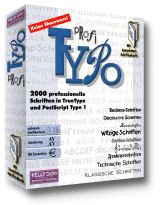 |
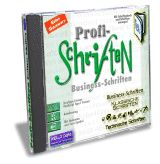 |
Das Dokument Kelly.pdf (900 KB, 23 Seiten) befaßt sich mit den Schriftfälschungen, die von Hans Fremuth und Charles Biddle verbreitet wurden und werden, in Deutschland von Kelly Data alias Kelly Media und in den USA von Bay Animation alias Bay Fonts. Anhand der Schrift "Melior" (Linotype) von Hermann Zapf wird ausführlich gezeigt, wie die Schriftfälscher vorgegangen sind.
In den Nachträgen und Ergänzungen vom 15. Juli 2006 wird auf neue Entwicklungen in diesem Fall eingegangen.
"Schriften"
- Eine anonyme CD mit Schriftfälschungen
.
("Schriften"
- An Anonymous CD with Font Forgeries)
Über Warenhäuser werden auch anonyme CDs mit Schriftfälschungen verkauft. Ein Beispiel ist die vorliegende CD, die wir in der Datei Schriften.pdf (107 Seiten, 650 KB) dokumentieren. Diese "Schriften"-CD enthält weder auf der CD-Hülle noch auf der CD selbst den Namen der CD-Herstellerfirma oder der CD-Vertriebsfirma. Allerdings ist innen auf der CD eine Hotline "0190-876747" aufgedruckt, die aber nicht mehr gültig ist.
Die CD enthält 1979 Schriftfälschungen der Fonts von Adobe, Corel, Linotype, Monotype, SWFTE, URW und anderen Font-Firmen als Primär- und Sekundärfälschungen. 150 Fonts tragen den "Copyright"-Vermerk "Atech Software, Carlsbad CA", und 36 Fonts tragen den Vermerk "Computer Solutions GmbH, Telefon 08092/5018". Etliche Fonts enthalten den Vermerk: "Please Steal This Font", der von der anonymen Firma offenbar als Lizenz zum Stehlen aufgefaßt wird.
Die
Adobe Font Folio Fälschung "Schriftenpaket Osteuropa"
.
(The Adobe Font
Folio Forgery "Font Collection Eastern Europe")
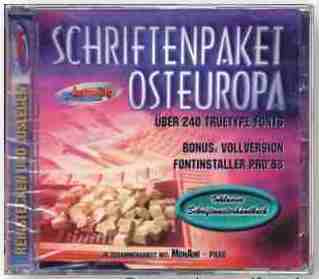
Von den Firmen Pearl, Schütz Neue Medien GmbH, Softwareversand Detlef Dudlo usw. wird eine CD mit dem Titel "Schriftenpaket Osteuropa" verkauft, die 245 Fonts umfaßt, die allesamt Fälschungen von Fonts der Adobe Font Folio darstellen. Die Fälschungen wurden von der liquidierten Firma Hemming produziert, deren Inhaber ermordet wurde. Dieser Fall liest sich wie ein Kriminalroman und wird in der Datei Osteuropa1.pdf (345 KB, 11 Seiten) detailliert geschildert.
In einer weiteren großen Datei Osteuropa2.pdf (1,2 MB, 7 Seiten) sind Schriftmuster aller Fälschungen abgebildet, die sich direkt mit unseren Schriftmustern der Adobe Font Folio 7 vergleichen lassen, siehe oben.
Die Gründer von Adobe, Charles Geschke und John Warnock, betreiben McCarthyismus, indem sie die "Piraterie" von "Font-Software" als "Verbrechen" ("felony") apostrophieren und Besucher ihres "Anti-Piraterie"-Webseite auffordern, "Piraten" zu melden, aber nicht etwa bei der Staatsanwaltschaft, sondern bei der Firma Adobe, die sich selbst als Staatsanwaltschaft geriert. Beweise für die von den "Piraten" begangenen "Verbrechen" werden von den McCarthyisten Geschke und Warnock nicht verlangt. Anonymes Anschwärzen ohne Vorlage von Beweisen genügt! Damit lenken Geschke und Warnock von eigenen "Piraterien" ab, und das erklärt auch, warum sie seit Jahren panische Angst haben, gegen das "Schriftenpaket Osteuropa" juristisch vorzugehen, weil sie befürchten, daß die Behörden dann auch gegen die Firma Adobe selbst ermitteln. Wegen weiterer Details siehe die obige Datei Osteuropa1.pdf.
Zu andere CDs von Olaf Hemming siehe das folgende Dokument.
Olaf Hemming, der 2001 ermordet wurde, verkaufte über die Firmen Hemming GmbH (später Hemming AG), Software Exclusiv GmbH, Mustang usw. nicht nur die oben unter "Schriftenpaket Osteuropa" beschriebene Kollektion, sondern verhökerte auch diverse andere CDs mit Schriftfälschungen. Dazu gehört z.B. die CD "888 Schriften", die CD "1000 Fonts", die drei CDs "1000 Schriften" (1 bis 3) sowie andere Font-CDs. In der Datei Hemming.pdf (500 KB, 48 Seiten) dokumentieren wir ausführlich die "westeuropäischen" Fonts der CD "888 Schriften + 222 Osteuropäische Schriften + Euro-Fonts" und gehen auch kurz auf die anderen Hemming-CDs ein, die heute noch bisweilen über Ebay zum Kauf angeboten werden.
Offene
und verdeckte Schriftfälschungen
.
Erläutert
anhand der Schriften-CD "URW EuroWorks"
.
(Public and Secret
Font Forgeries: URW EuroWorks)
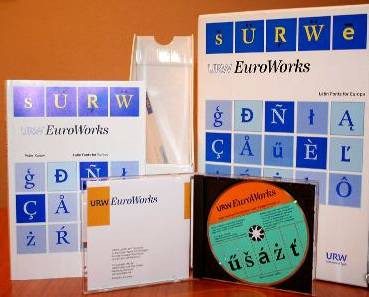
Da Schriftfälschungen dem Zweck der Täuschung des Schriftkäufers dienen, ist der Begriff der "verdeckten Schriftfälschung" eigentlich eine Tautologie und folglich der Begriff der "offenen Schriftfälschung" eigentlich eine contradictio in adjecto, denn der Schriftfälscher legt seine Fälschungen (Fälschung des Schriftnamens, des Copyright-Vermerks, der Herkunft usw.) selten offen und mithin sind Schriftfälschungen meist verdeckte Fälschungen. Bisweilen gibt es aber auch "offene Schriftfälschungen" (z.B. enthält die von Peter Karow publizierte URW EuroWorks einige "offene Schriftfälschungen"), ebenso wie es bisweilen auch "offene Kunstfälschungen" gibt (z.B. die von Konrad Kujau publizierten Kunstfälschungen).
Das Dokument EuroWorks.pdf (570 KB, 20 Seiten) befaßt sich mit dem Thema "Offene und verdeckte Schriftfälschungen" anhand der URW EuroWorks CD. In einem großen zweiten Dokument EuroWorksM.pdf (3 MB, 19 Seiten) werden die Fonts der EuroWorks CD als Schriftmuster abgebildet.
Zur URW TypeWorks siehe hier.
Sind
Fonts urheberrechtlich geschützte Werke der Kunst?
.
(Are Fonts Works
of Art Protected by Copyright Law?)
In dem Beitrag Kunstwerk.pdf (345 KB, 5 Seiten) beschreiben wir die Entscheidungen des Reichsgerichts und des Bundesgerichtshofs zu dieser Frage und bilden die streitgegenständlichen Druckschriften mit Schriftmustern ab.
Sind
Fonts urheberrechtlich geschützte Computerprogramme?
.
(Are Fonts Computer
Programs Protected by Copyright Law?)
In dem Beitrag Computerprogramm.pdf (360 KB, 14 Seiten) befassen wir uns ausführlich mit der Frage, ob Fonts urheberrechtlich geschützte Computerprogramme sind.
Sind
PostScript-Fonts urheberrechtlich geschützt?
.
(Are PostScript
Fonts Protected by Copyright Law)
In dem Beitrag PostScript.pdf (aus Zeitgründen nicht erschienen), der den obigen Beitrag Computerprogramm.pdf ergänzt und vertieft, befassen wir uns zuerst mit der Frage, ob PS- und EPS-Dateien sowie PDF-Dateien urheberrechtlich geschützte Computerprogramme sind, und zeigen dann, warum PS-Fonts keinen Urheberrechtsschutz genießen. Zu dem PS-Fonts zählen neben den alten Type-1-Fonts (.pfb) auch die neuen OpenType-Fonts (.otf). Ferner befassen wir uns in diesem Beitrag mit Adobe's getürkten PostScript-Fonts.
Das Zusatzdokument PostScript2.pdf (450 KB, 12 Seiten) zeigt Schriftmuster aller ursprünglichen 35 "Adobe Core Fonts", wie sie ab etwa 1985 in den damaligen PostScript-Laserdruckern enthalten waren.
Man vergleiche die "Adobe Core Fonts" mit den "URW Core Fonts", die hier dokumentiert sind.
Der
EULA-Betrug und wie man sich dagegen schützt
.
(The EULA Fraud
and How to Get a Legal Remedy)
In dem Dokument EULA.pdf (70 KB, 6 Seiten) befassen wir uns mit einer Betrugsmethode, die mit Hilfe der EULA (End User License Agreement) praktiziert wird. Das Dokument enthält auch Muster für rechtsverbindliche Erklärungen und für eidesstattliche Versicherungen. Wenn eine Schriftenfirma sich weigert, solche Erklärungen abzugeben, dann ist zu vermuten, daß man zum Opfer eines EULA-Betruges gemacht werden soll.
EULAs gab es übrigens in der Schriftbranche schon vor 100 Jahren. So enthielten z.B. die um 1910 erschienenen Schriftkataloge der Firmen D. Stempel AG, Gebr. Klingspor, Ludwig & Mayer und J. G. Schelter & Giesecke die folgende EULA: eula-seite1.jpg und eula-seite2.jpg. Es erstaunt, daß diese bizarre EULA die Verwendung von Schriften für den Flachdruck und Tiefdruck verbieten wollte. Erlaubt war nur die Verwendung der Schriften für den Hochdruck einschließlich der Herstellung von Stereos und Galvanos. Es ist nicht bekannt, ob es damals irgendeine Druckerei gab, die sich an diese bizarre EULA gehalten hat.
Der
deutsche Richter und seine Schrift.
.
(The German Judge
and his Typeface)
Nachdem wir die unappetitliche "Font Forging Industry" dokumentiert haben, bringen wir zur Entspannung eine Quizfrage: Welchen Font sieht jeder deutsche Richter jeden Tag? Zur Lösung siehe den Beitrag Richter.pdf (5 Seiten, 200 KB).
The files from this site are copyright by Ulrich Stiehl and must not be offered for download elsewhere on the internet.